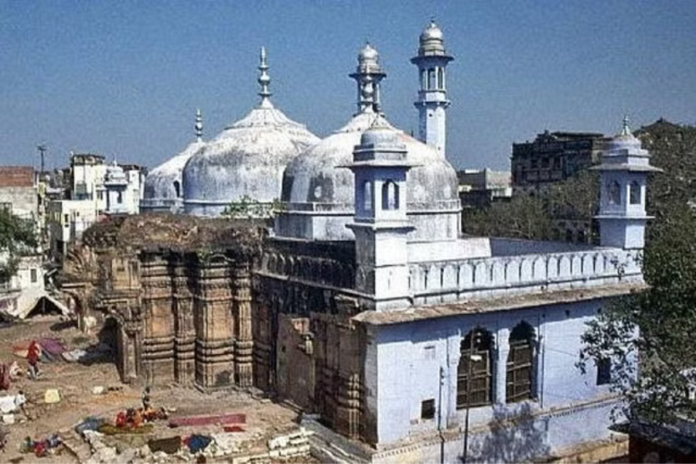Over the past several centuries, the carvings of Hindu Gods and Hindu motifs on the walls and pillars of the Gyanvapi complex have stood as silent witnesses of the gory and tragic history of the Islamic invasion of India.
While very few non-Muslims have ventured into the revered religious complex since the days of the Mughal tyrant Aurangzeb, the reality of the Gyanvapi ‘masjid’ had been captured by a British photographer more than 150 years ago.
These photographs are displayed in the Photographs Department of the ‘Getty Museum’, located in Los Angeles, USA. The introduction to these rare and historic photographs reads ‘Gyanvapi – the well of knowledge’.
“View of the Gyanvapi well inside the mosque of the same name in Varanasi. Three ornately carved pillars stand in the foreground, under a recessed arch and in front of a carved statue,” the description further reads.
Another picture shows the elaborately decorated idol between two pillars and above it a bell hangs at the top of one of the pillars. In this photo, the idol of Bajrangbali on the wall, bells, carved pillars and other symbols of Hindu religion can be seen very clearly.
Photos were taken in 1868
These pictures were taken by British photographer Samuel Byrne in 1868 when he came on a visit to Banaras. These pictures show the reality of Gyanvapi 155 years ago. The museum houses about 150 photographs taken and auctioned by Samuel, which he captured with his camera during his travels in India.
Old carvings on the walls
These include Ghats of Banaras, many temples including Alamgiri Masjid and many pictures of Nandi sitting inside and outside Gyanvapi. Professor Ashok Kumar Singh of the Department of Ancient History, Art Culture and Archeology of Kashi Hindu University explains that in the paintings of Samuel Barne, the images of Gods and Goddesses on the walls in Gyanvapi, symbols of Hinduism are clearly visible. This shows that many remains of the temple can still be found inside Gyanvapi.



